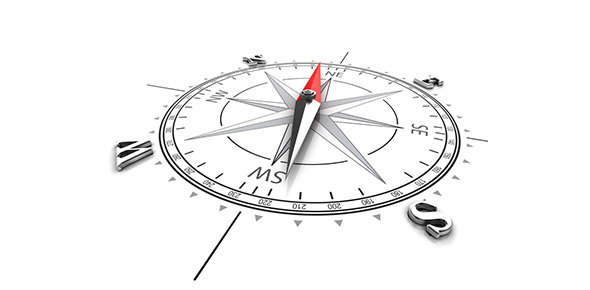Related Flashcards
Related Topics
Cards In This Set
| Front | Back |
|
Matteo Ricci
|
Matteo Ricci, SJ (October 6, 1552 – May 11, 1610
Matteo Ricci was born in 1552 in Macerata, today a city in the Italian region of Marche and then part of the Papal States. Ricci started learning theology and law in a Roman Jesuits' school. He entered the congregation in 1571, and in 1577 he filed an application to be a member of a missionary expedition to India. His journey began in March 1578 from Lisbon, Portugal. He arrived in Goa, a Portuguese Colony, in September 1578, and four years later he was dispatched to China. n 1601 Ricci returned to Beijing, accompanied by the Spanish Jesuit Diego de Pantoja. The two Jesuits were not initially granted an audience with the Emperor of China but, after they presented the Emperor with a chiming clock, Ricci was finally allowed to present himself at the Imperial court of the Wanli Emperor, thus becoming the first Westerner to be invited into the Forbidden City. Although Ricci was given free access to the Forbidden City, he never met the reclusive Wanli Emperor; however, Wanli did grant him patronage by allotting to Ricci a generous stipend that helped the Jesuits in China. Ricci lived on in China until the end of his life. He died in Beijing on May 11, 1610 at the age of 58. According to the code of the Ming Dynasty, foreigners who died in China had to be buried in Macau. The Jesuits made a special plea to the court, requesting a burial plot in Beijing in the light of Ricci's contributions to China. Emperor Wanli granted this permission and designated a Buddhist temple for the purpose. In October of 1610, Ricci's remains were transferred to the tomb.[12] The tombs of Ferdinand Verbiest, Johann Adam Schall von Bell, and other missionaries are also in the same location, which became known as the Zhalan cemetery (Chinese: 栅栏墓地; pinyin: Zhàlán Mùdì) and is now on the campus the Beijing Administrative College (located at 6 Chegongzhuang Road, Xicheng District, Chinese: 西城区车公庄大街6号; pinyin: Xīchéng Qū Chēgōngzhuāng Dàjiē 6Hào).Matteo Ricci was succeeded as Superior General of the China mission by Nicolò Longobardo in 1610. Longobardo entrusted another Jesuit, Nicolas Trigault, with the job of expanding and editing, as well as translating into Latin, those of Ricci's papers that were found in his office after his death. The work was first published in 1615 in Augsburg as De Christiana expeditione apud Sinas, and soon was translated to a number of other European languages.[13][edit] |
|
Vasco de Gama
|
Vasco da Gama, 1st Count of Vidigueira (Portuguese pronunciation: [ˈvaʃku dɐ ˈɡɐmɐ]) (Sines or Vidigueira, Alentejo, Portugal, around 1460 or 1469 – 24 December 1524 in Kochi, India) was a Portuguese explorer, one of the most successful in the European Age of Discovery and the commander of the first ships to sail directly from Europe to India. For a short time in 1524 he was Governor of Portuguese India under the title of Viceroy. More may be needed...
|
|
The first joint stock companies
|
Finding the earliest joint stock company is a matter of definition. Around 1250 in France at Toulouse 96 shares of the Société des Moulins du Bazacle, or Bazacle Milling Company were traded at a value that depended on the profitability of the mills the society owned.]].[3] The Swedish company Stora has documented a stock transfer for 1/8 of the company (or more specifically, the mountain in which the copper resource was available) as early as 1288.In more recent history, the English were first with joint stock companies. The earliest recognized company was the Virginia Company.[4][not in citation given]The East India Company (of England, later of the United Kingdom), sometimes referred to as "John Company", was one of the most famous joint-stock companies. It was granted an English Royal Charterby Elizabeth I on December 31, 1600, with the intention of favouring trade privileges in India. The Royal Charter effectively gave the newly created Honourable East India Company (HEIC) a 21-year monopolyon all trade in the East Indies. The Company transformed from a commercial trading venture to one that virtually ruled India as it acquired auxiliary governmental and military functions, until its dissolution.
![Finding the earliest joint stock company is a matter of definition. Around 1250 in France at Toulouse 96 shares of the Société des Moulins du Bazacle, or Bazacle Milling Company were traded at a value that depended on the profitability of the mills the society owned.]].[3] The Swedish company Stora has documented a stock transfer for 1/8 of the company (or more specifically, the mountain in which the copper resource was available) as early as 1288.In more recent history, the English were first with joint stock companies. The earliest recognized company was the Virginia Company.[4][not in citation given]The East India Company (of England, later of the United Kingdom), sometimes referred to as "John Company", was one of the most famous joint-stock companies. It was granted an English Royal Charterby Elizabeth I on December 31, 1600, with the intention of favouring trade privileges in India. The Royal Charter effectively gave the newly created Honourable East India Company (HEIC) a 21-year monopolyon all trade in the East Indies. The Company transformed from a commercial trading venture to one that virtually ruled India as it acquired auxiliary governmental and military functions, until its dissolution.The East India Company](https://upload.wikimedia.org/wikipedia/commons/thumb/3/32/British_East_India_Company_flag.svg/250px-British_East_India_Company_flag.svg.png) |
|
Kongo Kingdom
|
Was an African kingdom located in west centralAfrica in what are now northern Angola, Cabinda, the Republic of the Congo, and the western portion of the Democratic Republic of the Congo.[5] At its greatest extent, it reached from the Atlantic Ocean in the west to the Kwango River in the east, and from the Congo River in the north to the Kwanza River in the south. The kingdom consisted of several core provinces ruled by the Manikongo, the Portuguese version of the Kongo title 'Mwene Kongo', meaning lord or ruler of the Kongo kingdom, but its sphere of influence extended to neighbouring kingdoms, such as Ngoyo, Kakongo, Ndongo and Matamba.[1]The Bundu dia Kongo sect favors reviving the kingdom throughsecession from Angola, the Republic of the Congo, the Democratic Republic of the Congo and Gabon.
|
|
Mughal State
|
He Mughal era is the historic period of the Mughal Empire in India, it ran from the early sixteenth century, to a point in the early eighteenth century when the Mughal Emperors' power had dwindled. It ended in several generations of conflicts between rival warlords
India in the 16th century had numerous unpopular rulers, both Muslim and Hindu, with an absence of common bodies of laws or institutions. External developments also played a role in the rise of the Mughal Empire. The circumnavigation of Africa by the Portuguese explorer Vasco da Gama in 1498 allowed Europeans to challenge Arab control of the trading routes between Europe and Asia. In Central Asia andAfghanistan, shifts in power pushed Babur of Ferghana (in present-day Uzbekistan) southward, first to Kabul and then to India. The Mughal Empire lasted for more than three centuries. The Mughal Empire was one of the largest centralized states in premodern history and was the precursor to the British Indian Empire |
|
Emperor Akbar
|
Jalaluddin Muhammad Akbar (جلال الدین محمد اکبر Jalāl ud-Dīn Muhammad Akbar), also known as Akbar the Great (November 23, 1542 – October 27, 1605) [1][2][4] was the third Mughal Emperor of India/Hindustan. He was of Timuriddescent[5]; the son of Humayun, and the grandson of Babur who founded the dynasty. At the end of his reign in 1605 the Mughal empire covered most ofNorthern India.[6]Akbar, widely considered the greatest of the Mughal emperors,[citation needed] was thirteen years old when he ascended the throne in Delhi, following the death of his father Humayun.[7] During his reign, he eliminated military threats from thePashtun descendants of Sher Shah Suri, and at the Second Battle of Panipat he defeated the Hindu king Hemu.[8][9] It took him nearly two more decades to consolidate his power and bring parts of northern and central India into his realm. The emperor solidified his rule by pursuing diplomacy with the powerful Rajputcaste, and by admitting Rajput princesses in his harem
|
|
Tokugawa Shogunate
|
The Tokugawa shogunate, also known as the Tokugawa bakufu (徳川幕府?) and the Edo bakufu (江戸幕府?), was a feudal regime ofJapan established by Tokugawa Ieyasu and ruled by the shoguns of theTokugawa family. This period is known as the Edo period and gets its name from the capital city, Edo, which now is called Tokyo. The Tokugawa shogunate ruled from Edo Castle from 1603 until 1868, when it was abolished during the Meiji Restoration
|
|
Toyotomi Hideyoshi
|
February 2, 1536 – September 18, 1598) was adaimyo in the Sengoku period who unified the political factions of Japan. He succeeded his former liege lord, Oda Nobunaga, and brought an end to theSengoku period. The period of his rule is often called the Momoyama period, named after Hideyoshi's castle. He is noted for a number of cultural legacies, including the restriction that only members of the samurai class could bear arms. Hideyoshi is regarded as Japan's second "great unifier.
|
|
Galileo Galilei
|
15 February 1564[4] – 8 January 1642)[1][5] was an Italian physicist, mathematician, astronomer, andphilosopher who played a major role in the Scientific Revolution. His achievements include improvements to the telescope and consequent astronomical observations, and support for Copernicanism. Galileo has been called the "father of modern observational astronomy,"[6] the "father of modern physics,"[7] the "father of science,"[7] and "the Father of Modern Science."[8] Stephen Hawking says, "Galileo, perhaps more than any other single person, was responsible for the birth of modern science.
|
|
Martin Luther
|
Martin Luther (10 November 1483 – 18 February 1546) initiated the Protestant Reformation.[1] As a priest and theology professor, he confronted indulgencesalesman Johann Tetzel with his The Ninety-Five Theses in 1517. Luther strongly disputed their claim that freedom from God's punishment of sin could be purchased with money. His refusal to retract all of his writings at the demand of Pope Leo X in 1520 and the Holy Roman Emperor Charles V at the Diet of Worms in 1521 resulted in his excommunication by the pope and condemnation as an outlaw by the emperor. Martin Luther taught that salvation is not from good works, but a free gift of God, received only by grace through faith in Jesus as redeemer from sin. His theology challenged the authority of the pope of the Roman Catholic Church by teaching that the Bible is the only source of divinely revealed knowledge[2] and opposed sacerdotalism by considering all baptised Christians to be a holy priesthood.[3] Those who identify with Luther's teachings are called Lutherans
|
|
King Alfonso
|
Alfonso the Magnanimous (also Alphonso; Catalan: Alfons; 1396 – 27 June 1458) was the King of Aragon (as Alfonso V), Valencia (as Alfonso III), Majorca,Sardinia and Corsica (as Alfonso II), and Sicily and Count of Barcelona (asAlfonso IV) from 1416 and King of Naples (as Alfonso I) from 1442 until his death. He was one of the most prominent figures of the early Renaissance and a knight of the Order of the Dragon.
He was also a powerful and consistent supporter of Scanderbeg, whom he decided to take under his protection as a vassal in 1451, shortly after the latter had scored his second victory against Murad II. In addition to financial assistance, he supplied the Albanian leader with troops, military equipment, and sanctuary for himself and his family if such a need should arise. This was because in 1448, while Scanderbeg was victoriously fighting off the Turkish invasions, three military columns, commanded by Demetrio Reres along with his sons Giorgio and Basilio, were dispatched to help Alfonso V defeat the barons of Naples who had rebelled against him. |
|
Nur Jahan
|
Begum Nur Jahan (Persian/Urdu: نور جہاں ) (alternative spelling Noor Jahan, Nur Jehan, Nor Jahan, etc.) (1577– 1645) also known as Mehr-un-Nisaa was an IndianEmpress of the Mughal Dynasty, of Persian origin whose tomb lies in Lahore,Pakistan.Begum Nur Jahan was the twentieth and favourite wife of Mughal Emperor Jahangir, who was her second husband - and the most famous Empress of the Mughal Empire. The story of the couple's infatuation for each other and the relationship that abided between them is the stuff of many (often apocryphal) legends. She remains historically significant for the sheer amount of imperial authority she wielded - the true "power behind the throne," as Jehangir was battling serious addictions to alcohol and opium throughout his reign - and is known as one of the most powerful women who ruled India with an iron fist.
|
|
Neo Confucian philosophy
|
Is a form of Confucianism that was primarily developed during the Song Dynasty and Ming Dynasty, but which can be traced back to Han Yu and Li Ao (772-841) in the Tang Dynasty. It formed the basis of Confucian orthodoxy in the Qing Dynasty of China. It attempted to merge certain basic elements of Confucianism, Daoism, and Buddhism. The most important of early Neo-Confucianists was the Chinese thinker Zhu Xi (1130-1200).
|
|
Manila Galleon
|
The Manila galleons or Manila-Acapulco galleons (Spanish: Galeones de Manila-Acapulco) were Spanish trading ships that sailed once or twice per year across thePacific Ocean between Manila in the Philippines, and Acapulco, New Spain (present-day Mexico). The name changed reflecting the city that the ship was sailing from.[1]Service was inaugurated in 1565 with the discovery of the ocean passage by Andrés de Urdaneta, and continued until 1815 when the Mexican War of Independence put a permanent stop to the galleon trade route.
|
|
Trade in Africa
|
Slavery has been practiced in Africa, as well as other places, throughout recorded history.[35][36] Between the seventh and twentieth centuries, Arab slave trade (also known as slavery in the East) took 18 million slaves from Africa via trans-Saharan and Indian Ocean routes. Between the fifteenth and the nineteenth centuries, the Atlantic slave trade took 7–12 million slaves to the New World.[37][38][39]In West Africa, the decline of the Atlantic slave trade in the 1820s caused dramatic economic shifts in local polities. The gradual decline of slave-trading, prompted by a lack of demand for slaves in the New World, increasing anti-slavery legislation in Europe and America, and the British Royal Navy's increasing presence off the West African coast, obliged African states to adopt new economies. Between 1808 and 1860, the British West Africa Squadron seized approximately 1,600 slave ships and freed 150,000 Africans who were aboard.[40] Action was also taken against African leaders who refused to agree to British treaties to outlaw the trade, for example against "the usurping King of Lagos", deposed in 1851. Anti-slavery treaties were signed with over 50 African rulers.[41] The largest powers of West Africa: the Asante Confederacy, the Kingdom of Dahomey, and the Oyo Empire, adopted different ways of adapting to the shift. Asante and Dahomey concentrated on the development of "legitimate commerce" in the form of palm oil, cocoa, timber and gold, forming the bedrock of West Africa's modern export trade. The Oyo Empire, unable to adapt, collapsed into civil wars.
|






